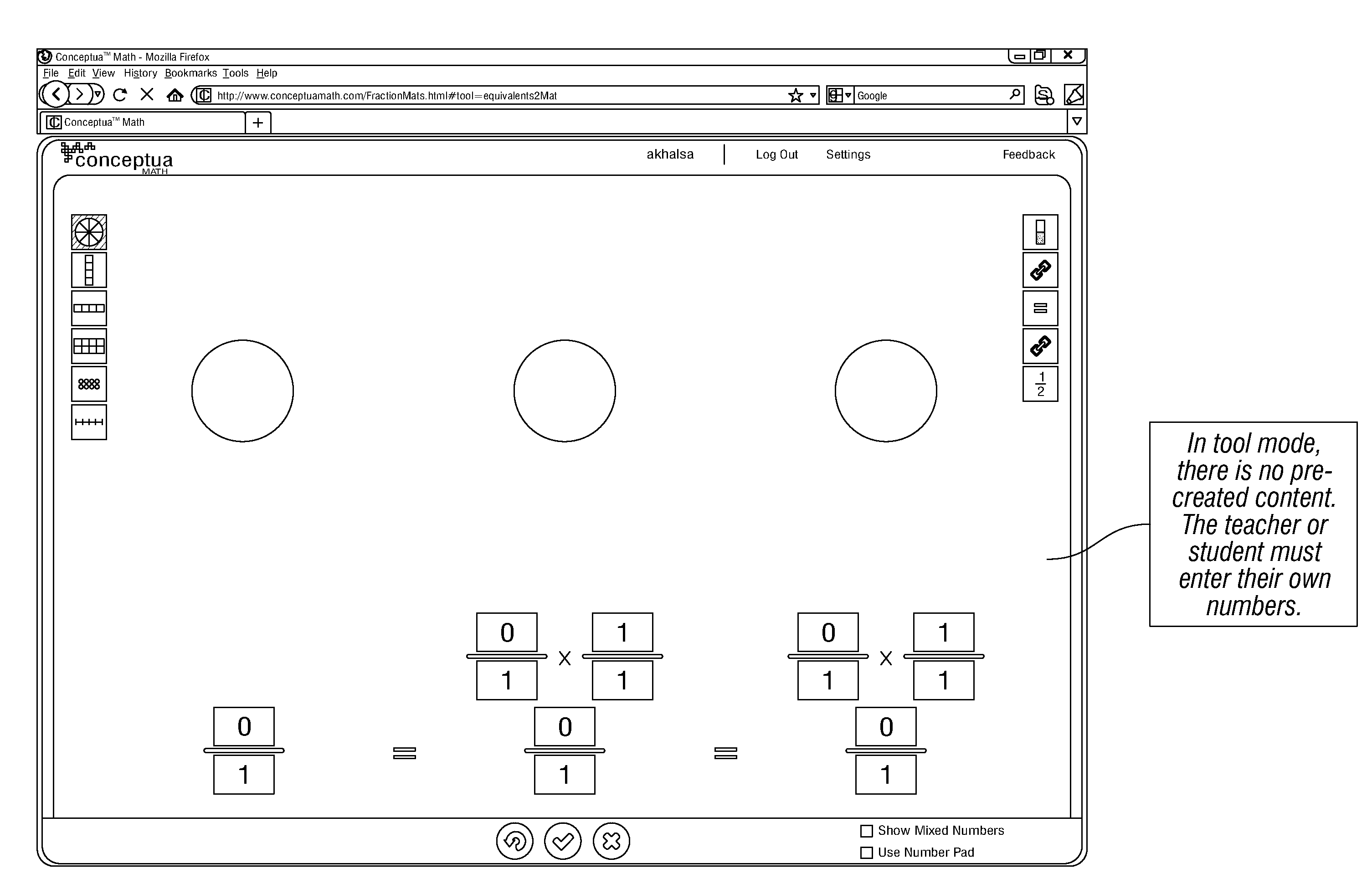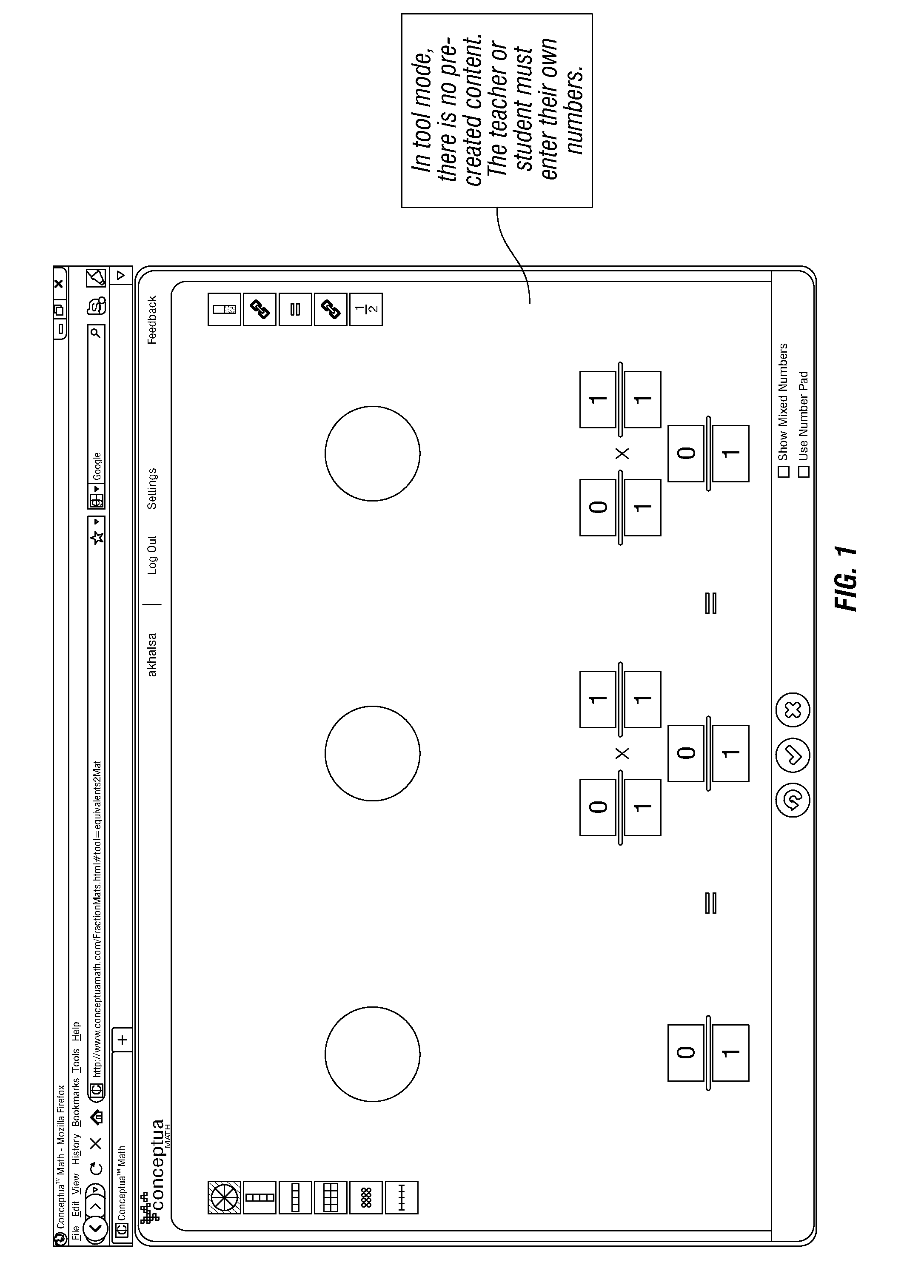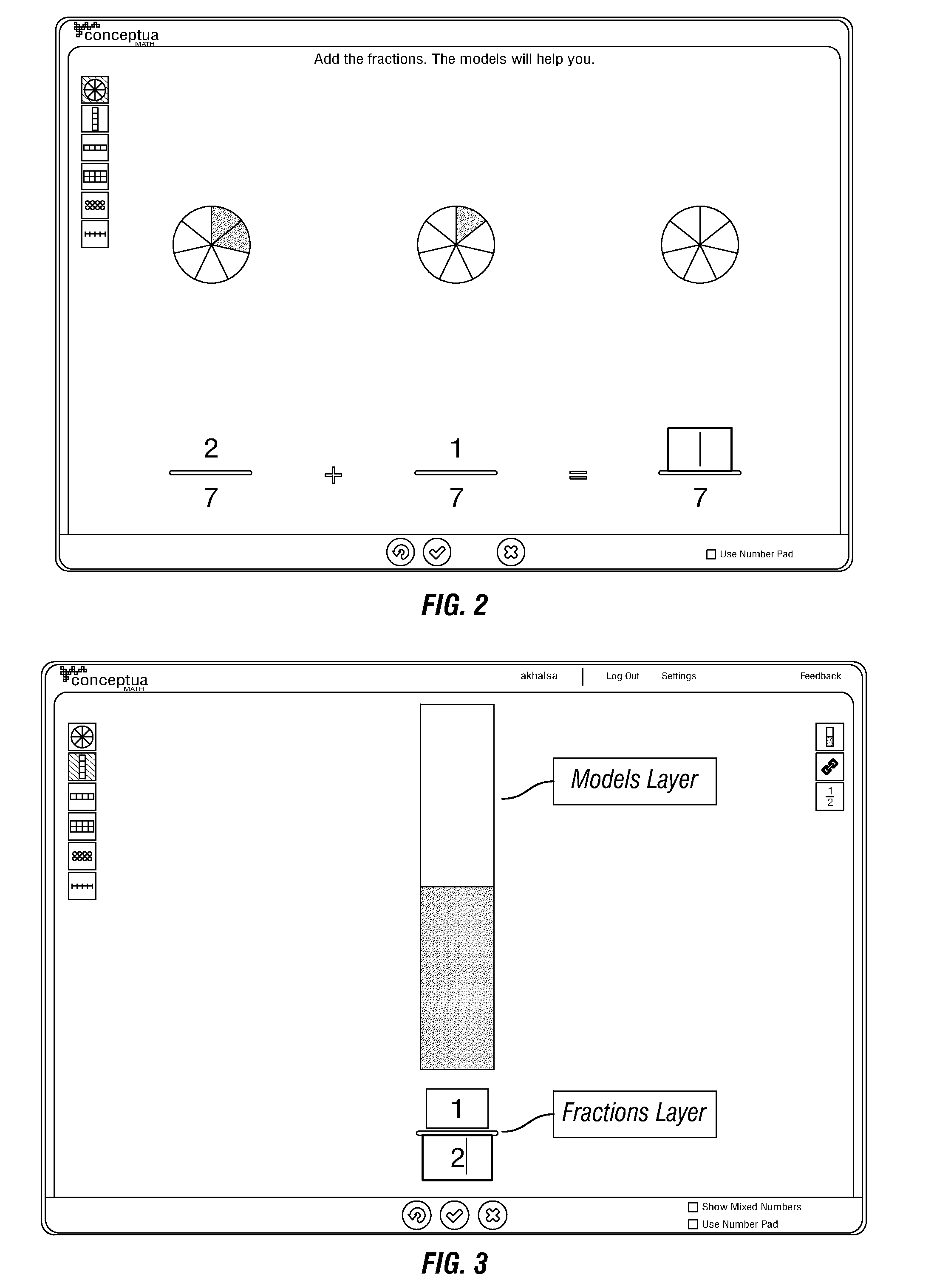Apparatus and method for tools for mathematics instruction
a technology of mathematics instruction and apparatus, applied in the field of apparatus and methods, can solve the problems of unlinked state, user not being able to unlock and re-state their value,
- Summary
- Abstract
- Description
- Claims
- Application Information
AI Technical Summary
Benefits of technology
Problems solved by technology
Method used
Image
Examples
Embodiment Construction
[0046]In a computer-implemented educational environment, four particular features are provided, which may be used separately or in combination, to drive the instruction of a particular curriculum, e.g. the instruction of fractions. In another implementation, educators and authors may use permutations and combinations of such features to construct in a graphical user interface a progression of interactive elements which help guide a student from visual concepts to procedures, such as equations and formulas. In a particular implementation, by using these features carefully, a curriculum author may design instructional sequences that provide careful, step-by-step sequences that help students progress from understanding the visual concepts, e.g. of fractions, to mastering procedures, e.g. fractions equations.
[0047]While much of the discussion herein is about a particular area of mathematics, namely, fractions, it should be appreciated that using fractions as a particular subject area of...
PUM
 Login to View More
Login to View More Abstract
Description
Claims
Application Information
 Login to View More
Login to View More - R&D
- Intellectual Property
- Life Sciences
- Materials
- Tech Scout
- Unparalleled Data Quality
- Higher Quality Content
- 60% Fewer Hallucinations
Browse by: Latest US Patents, China's latest patents, Technical Efficacy Thesaurus, Application Domain, Technology Topic, Popular Technical Reports.
© 2025 PatSnap. All rights reserved.Legal|Privacy policy|Modern Slavery Act Transparency Statement|Sitemap|About US| Contact US: help@patsnap.com



